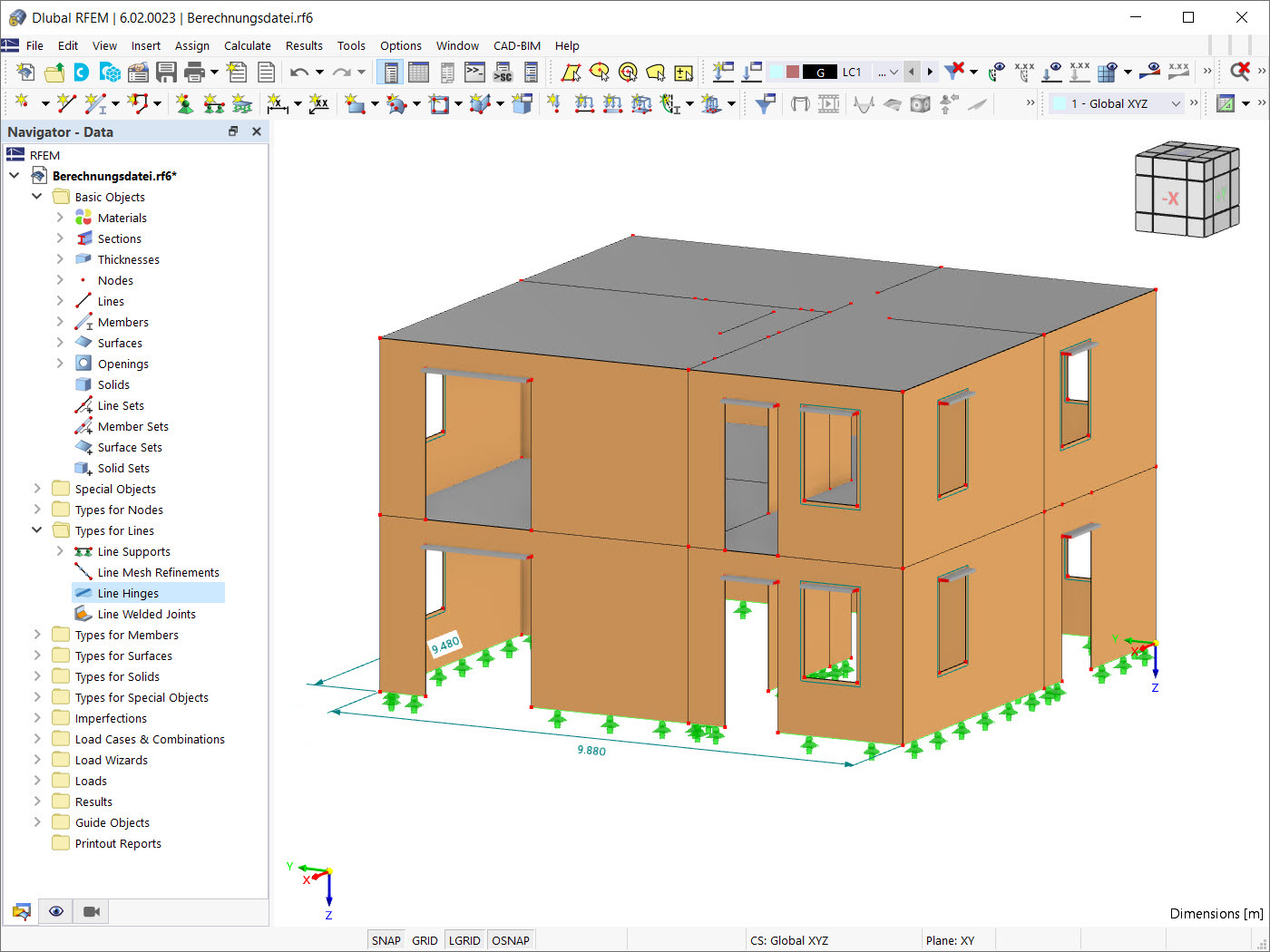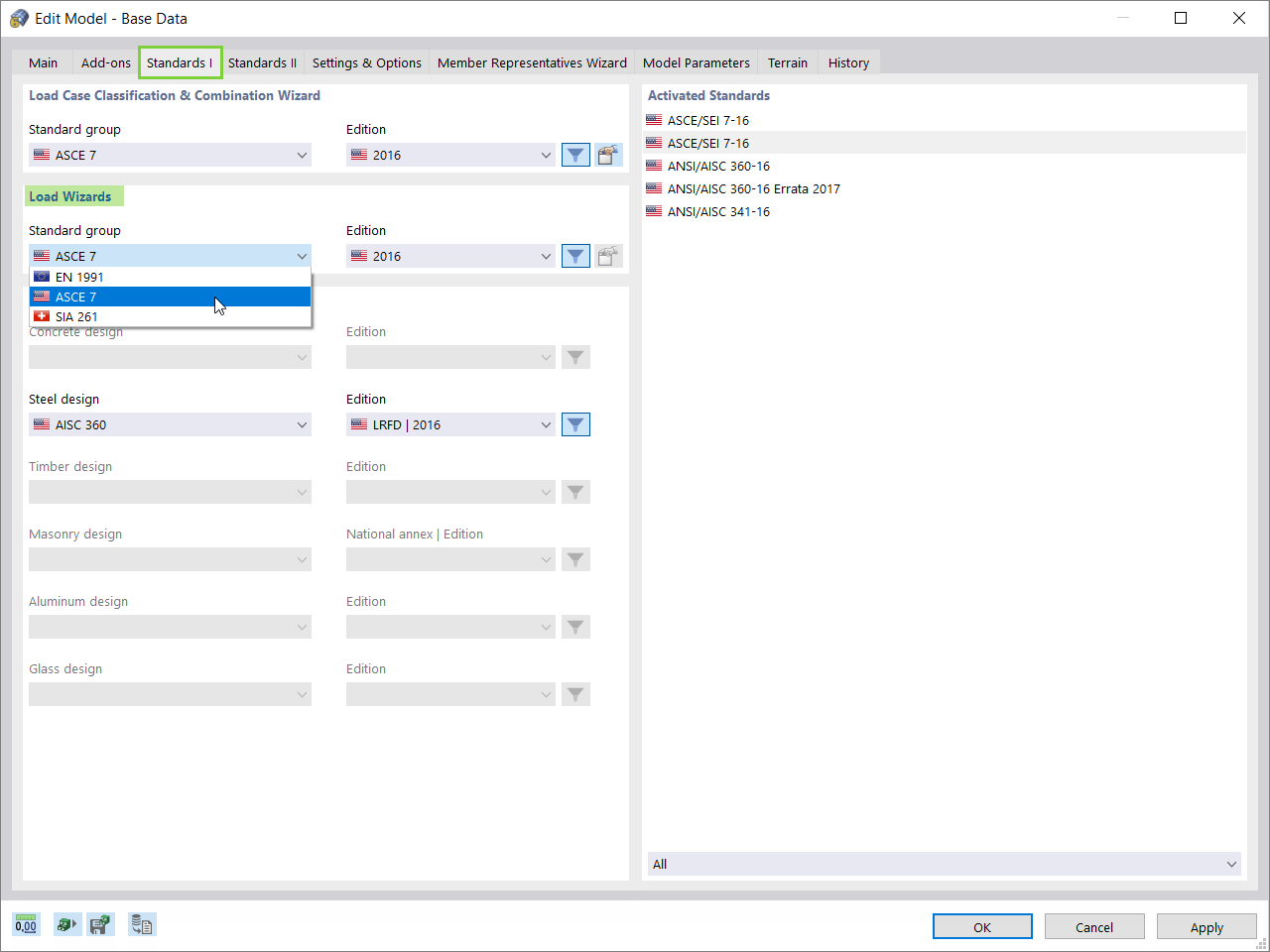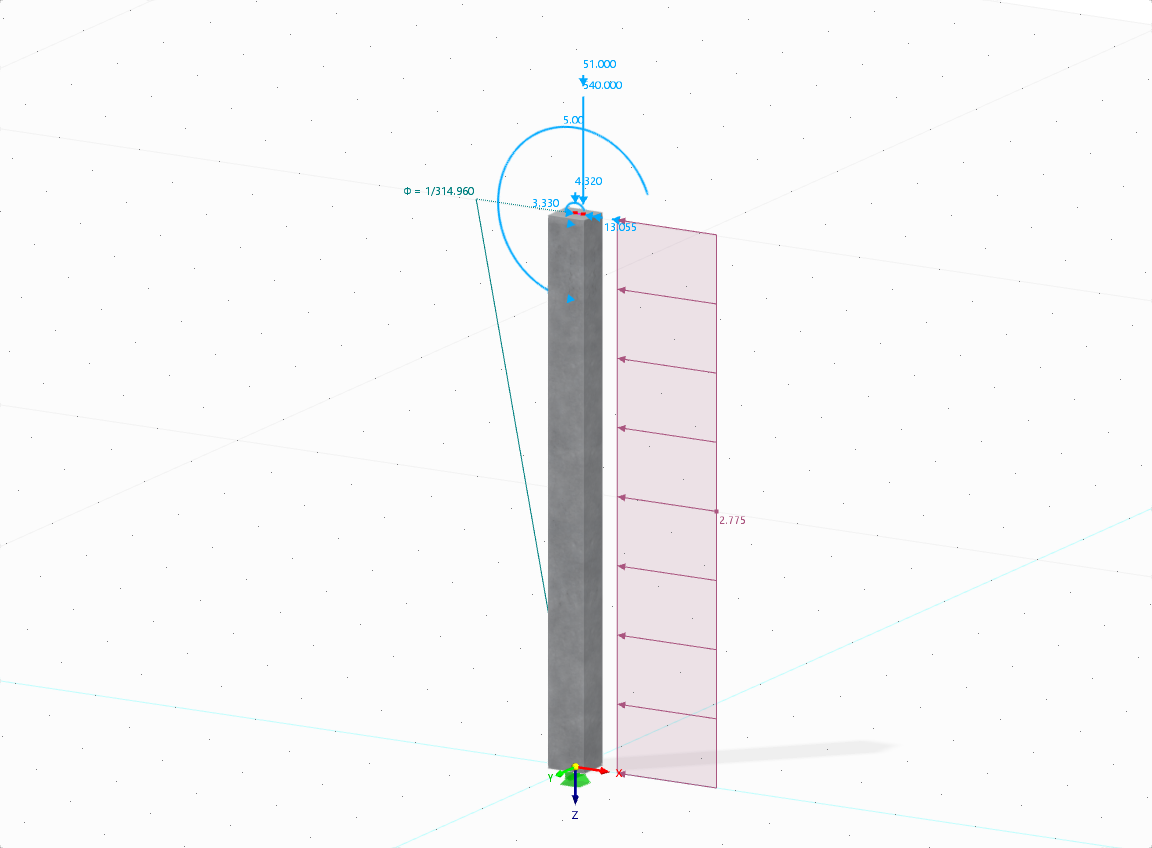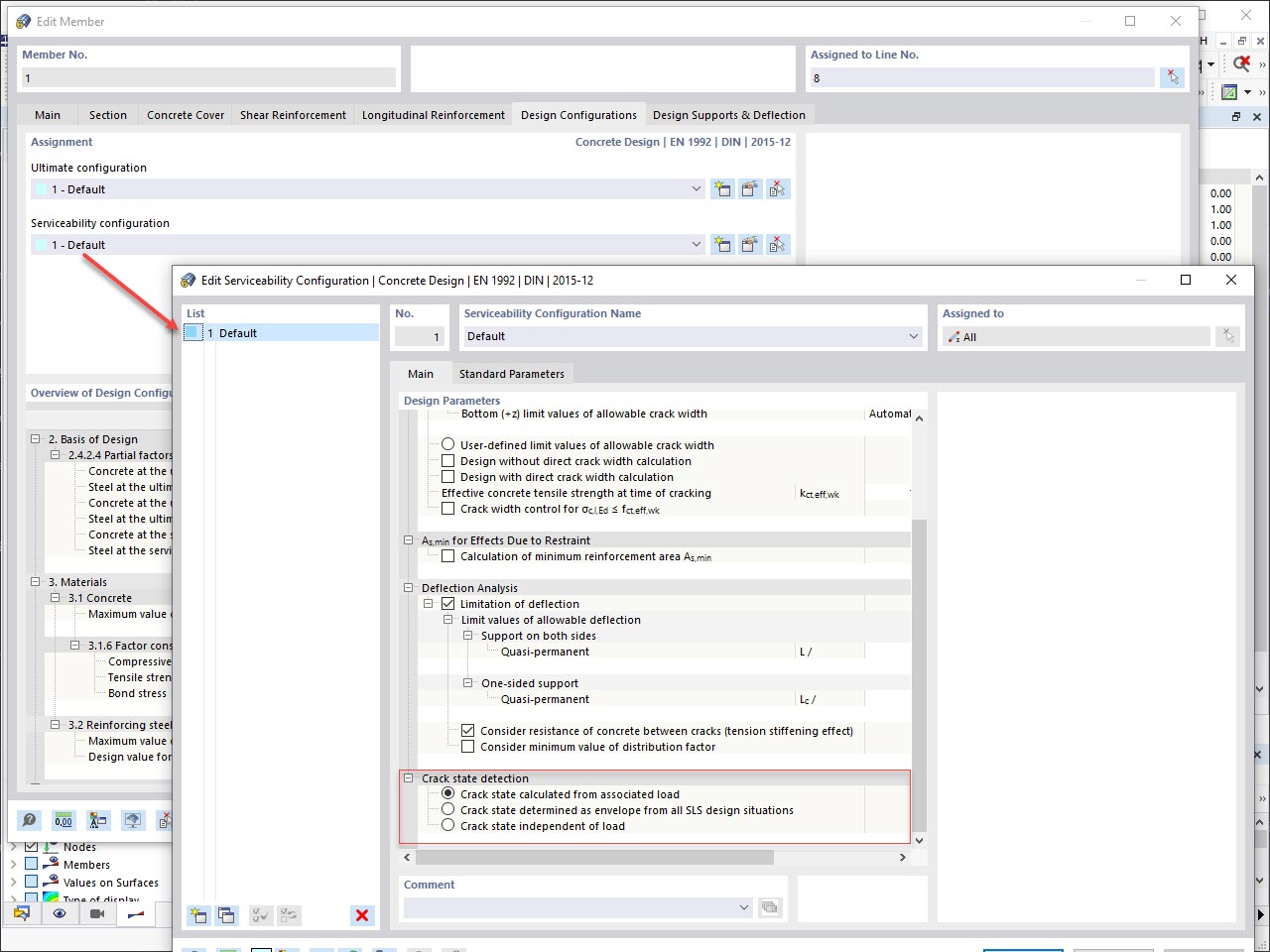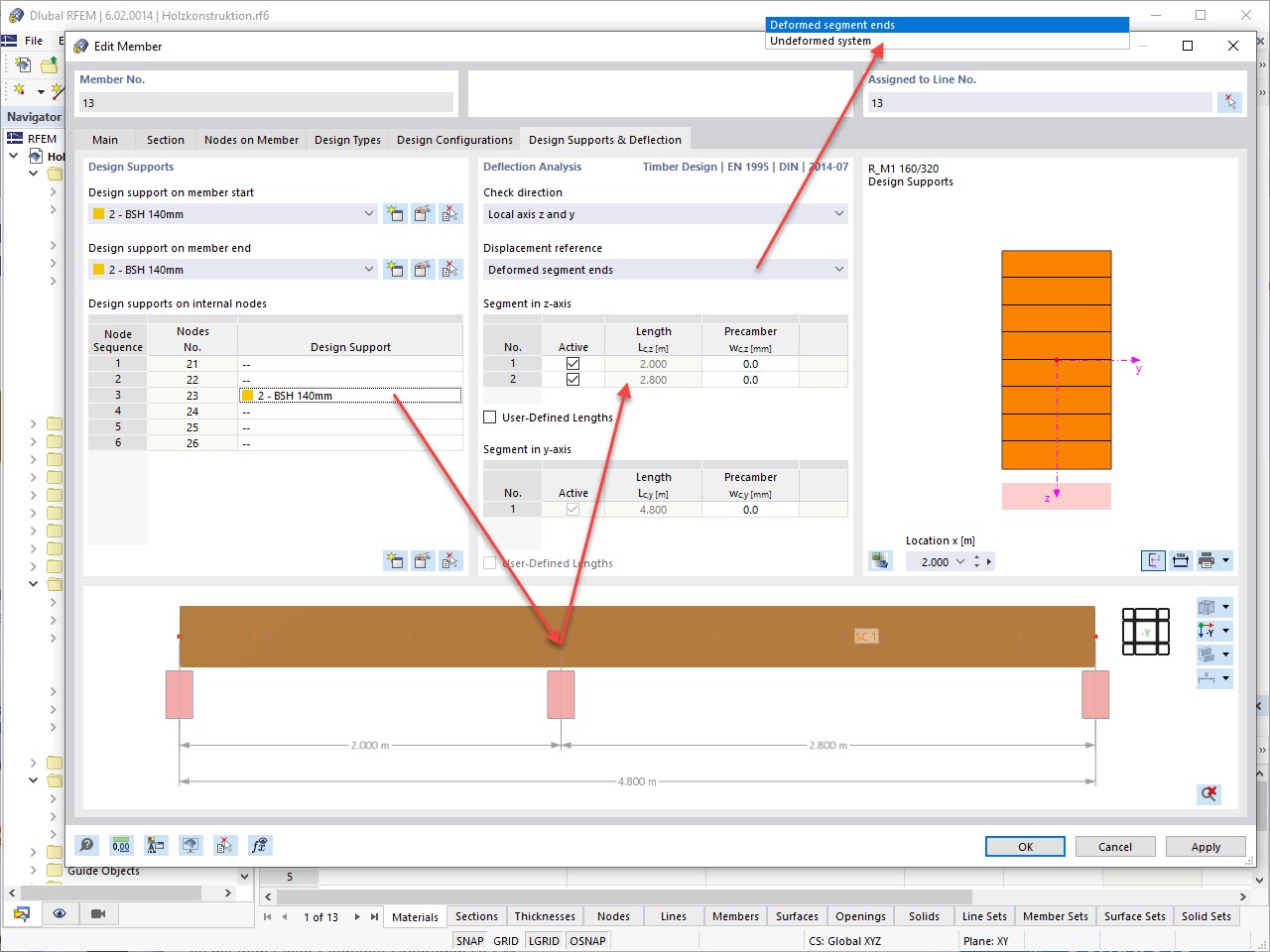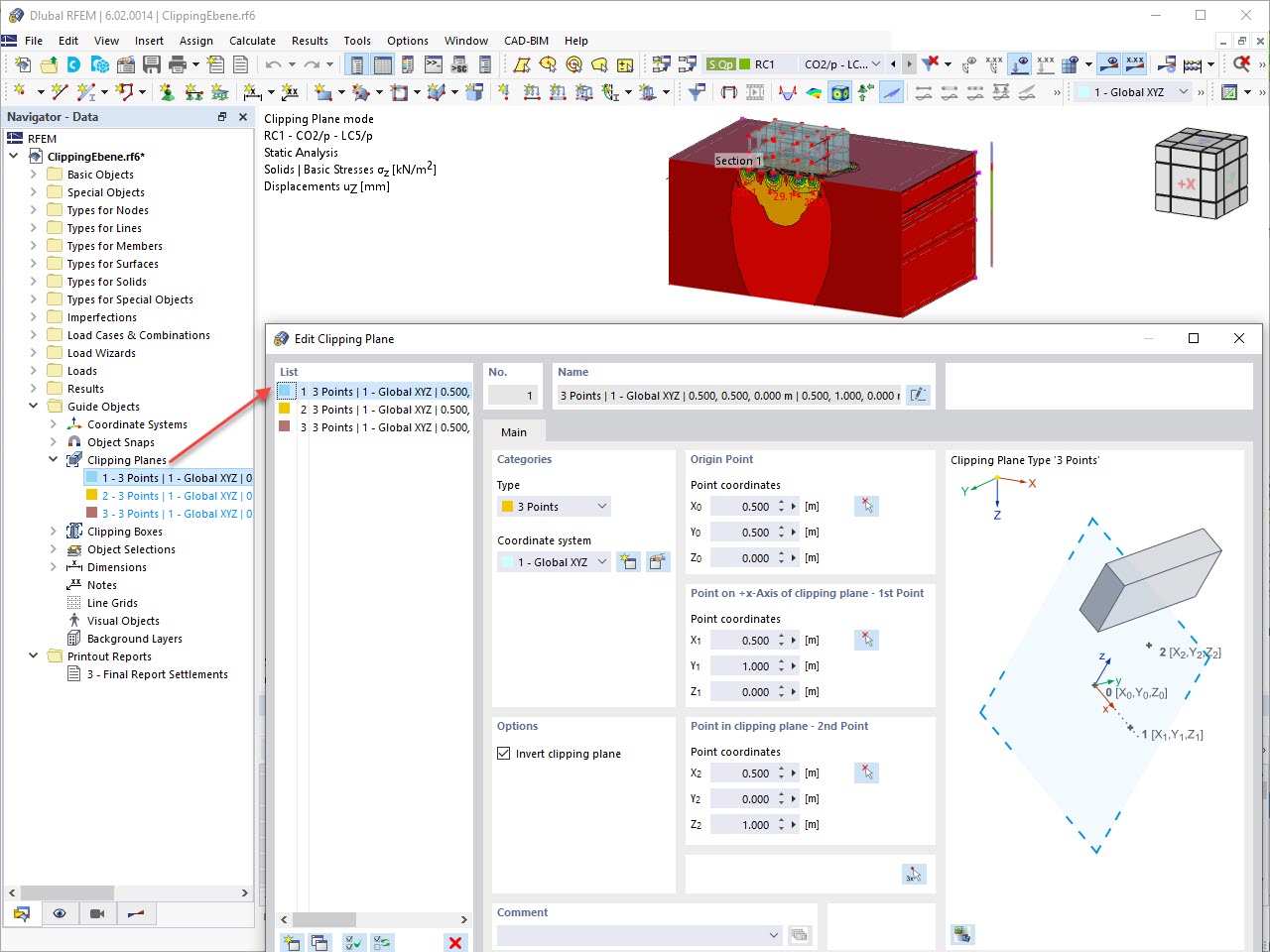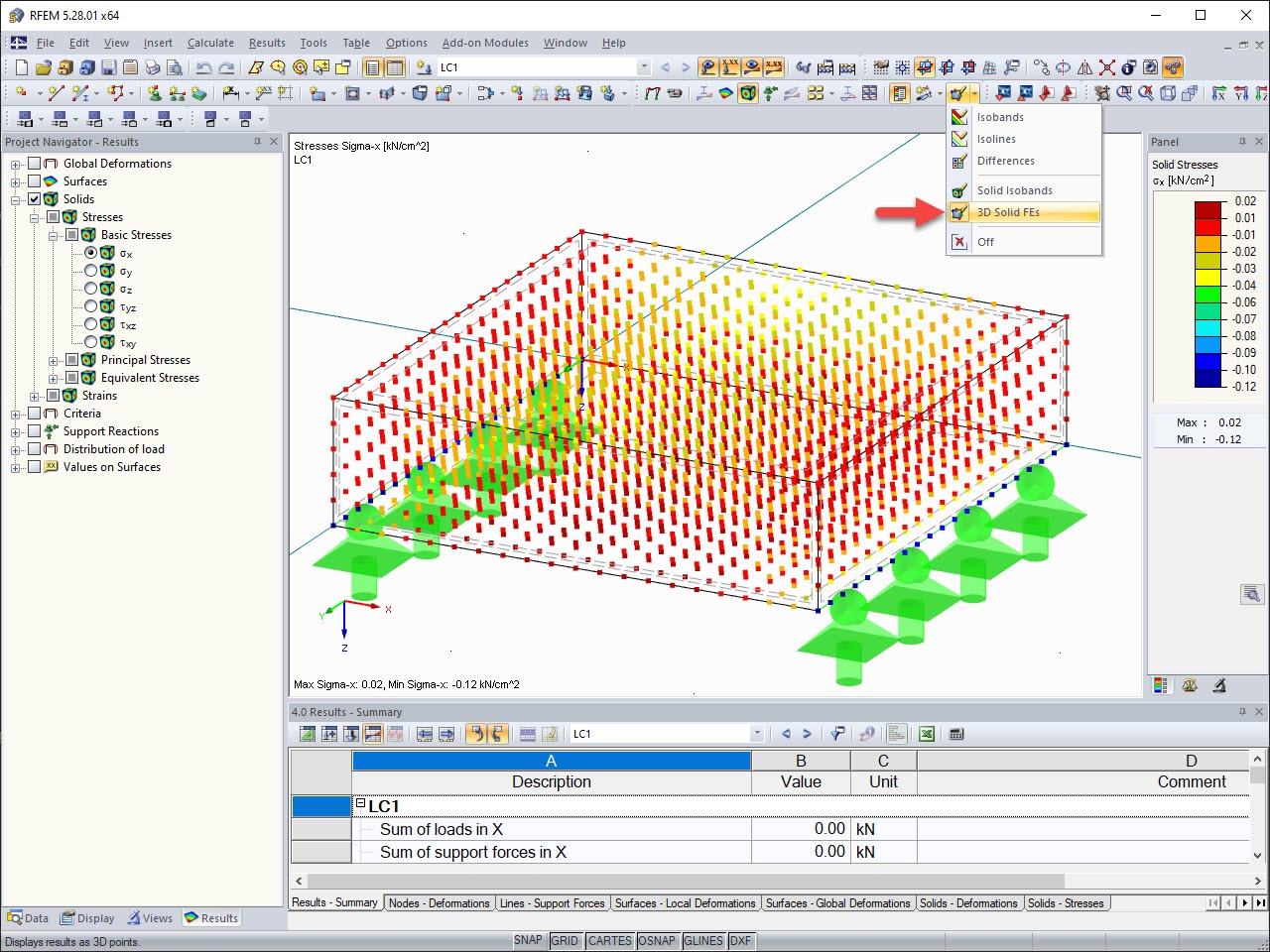In RFEM and RSTAB, this nonlinear relation between the axial and shear forces can be applied iteratively by using a friction hinge on the member end. That is: The member hinge represents the connection between the "structural components"; the load-bearing capacity results from the corresponding members and the defined friction coefficient. The position of the friction plane or the direction of the axial force perpendicular to the friction plane is defined by the axis system of the member with the friction hinge and its settings.
The hinge degree of freedom (ux, uy, uz) with the "Friction" nonlinearity setting determines the direction of the friction force/horizontal shear force. The direction in the nonlinearity setting determines the axial force perpendicular to the friction plane. The friction coefficient can be defined in the submenu of the nonlinearity setting.




































.png?mw=512&hash=4a84cbc5b1eacf1afb4217e8e43c5cb50ed8d827)
